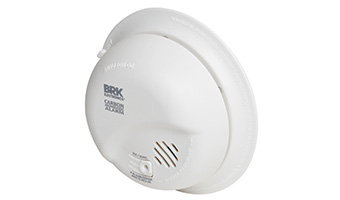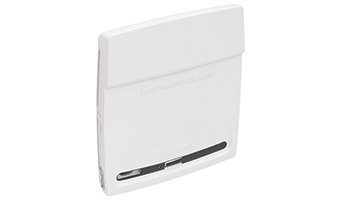Carbon Monoxide (CO) Alarm Buying Guide

Carbon monoxide is an odorless and tasteless invisible gas and is the number one cause of accidental poisoning in the United States, according to the Centers for Disease Control (CDC). Installing carbon monoxide (CO) detectors can help save lives.
Where Does Carbon Monoxide Come From?
Carbon monoxide is created when carbon-based fuels such as gasoline, propane, coal, wood, etc. are burned. If not properly ventilated, dangerous carbon monoxide fumes can build up. In high concentrations, carbon monoxide can be fatal.
CO build-ups can come from:- Furnaces, water heaters, and space heaters
- Gas fireplaces
- Vehicles or engines running in a garage
- Gas appliances, such as a range, stovetop, or clothes dryer
Carbon Monoxide Detector Legislation
Many states have carbon monoxide detector laws. Stay in compliance and avoid fines. Learn More About CO Legislation
Types of CO Alarms
When installed and working properly, carbon monoxide alarms help prevent dangerous CO poisoning and save lives. Know which alarms are best for your property, where to install them, and how to maintain them.

Plug-in – Fits into any standard outlet and most include a battery backup for protection when the power goes out.
Shop Now
Direct Wire – Alarms are wired to standard 120V electrical circuit and can be connected to other alarms.
Shop NowPlacement
Any apartment or room with a fuel-burning appliance, heater, fireplace, or garage should have a working CO alarm.
Always comply with your local fire safety and building codes to meet required legislation for carbon monoxide detector placement requirements.
NOTE: This information is a summary interpretation and was prepared as general reference material only. This summary is not authoritative as laws can be amended over time. For specific compliance requirements and updates, please refer to the actual code language and the statute or legal counsel.


